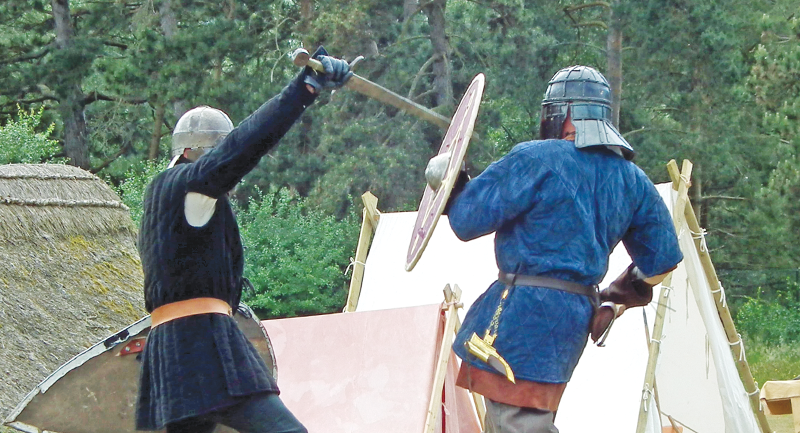- A feature from the May 2016 issue of Suffolk Norfolk Life magazine
 Click to view this issue »
Click to view this issue » - Category
- Places
Explore the sights and smells of medieval England at West Stow Anglo-Saxon village near Bury Saint Edmunds. The village comes alive during reenactment events, with sword-fighting, crafts, and storytelling. The kids can participate in an archaeological mini-dig at weekends and school holidays, and bushcraft activities take place in the summertime.
The Arrival of the Angles and the Saxons in the UK
The Angles and the Saxons were pagan warrior-farmers, whom the Romans invited to Britannia to strengthen their defences against potential invaders. However, when the Romans left, the Angles and the Saxons moved to Britannia in greater numbers, and the land became known as England (Angle-land). These settlers were the first English. They came from Germany, Denmark, and Holland, crossing over the North Sea, and travelling in small boats up the rivers, where they settled with the local people.
Their arrival was not entirely peaceful, and their presence was resisted by some Romano-British inhabitants. But the Angles and the Saxons were determined warriors, who enslaved some of the locals, and stood their ground. Their occupation of the land was a gradual process, rather than an invasion.
In about 420AD, a tribe of Anglo-Saxons built a village at Stow, which in their language, translated as ‘a special place’. The village that stands today is a reconstruction of the 5th-century village, which would have been closer to the river at the time. The path of the river has moved over the centuries.
This wasn’t the first settlement on the same plot of land. There was a Stone Age settlement at Stow during the Neolithic period, an Iron Age settlement, and finally a Roman village on the site before the Anglo-Saxons settled there.
The Anglo-Saxon village today
Today, the grounds offer archeologists a treasure chest of exciting finds from different historical eras. Archeologists have spent many long days at West Stow, digging out artifacts, some of which you can now see in the museum. There are Roman tools and ornaments, Iron Age pots and weapons, and flint arrow-heads from the Mesolithic period.
The reconstructed village contains six dwellings representing the different construction techniques that may have been used at the time. There’s a sunken house with a sandpit floor, created in accordance with old ideas of how Anglo-Saxons used to live. More recent ideas suggest they had wooden floors, so houses designed with wooden floors – both sunken, and raised – are also recreated there. These kinds of dwellings stood at Stow around 1600 years ago when the original Anglo-Saxon village was built.
One house contains furniture designed to reflect the period, and there’s also a village hall where locals would meet and entertain one another. Different materials are used in the walls and roofing to reflect the range of design styles used in Anglo-Saxon England.

